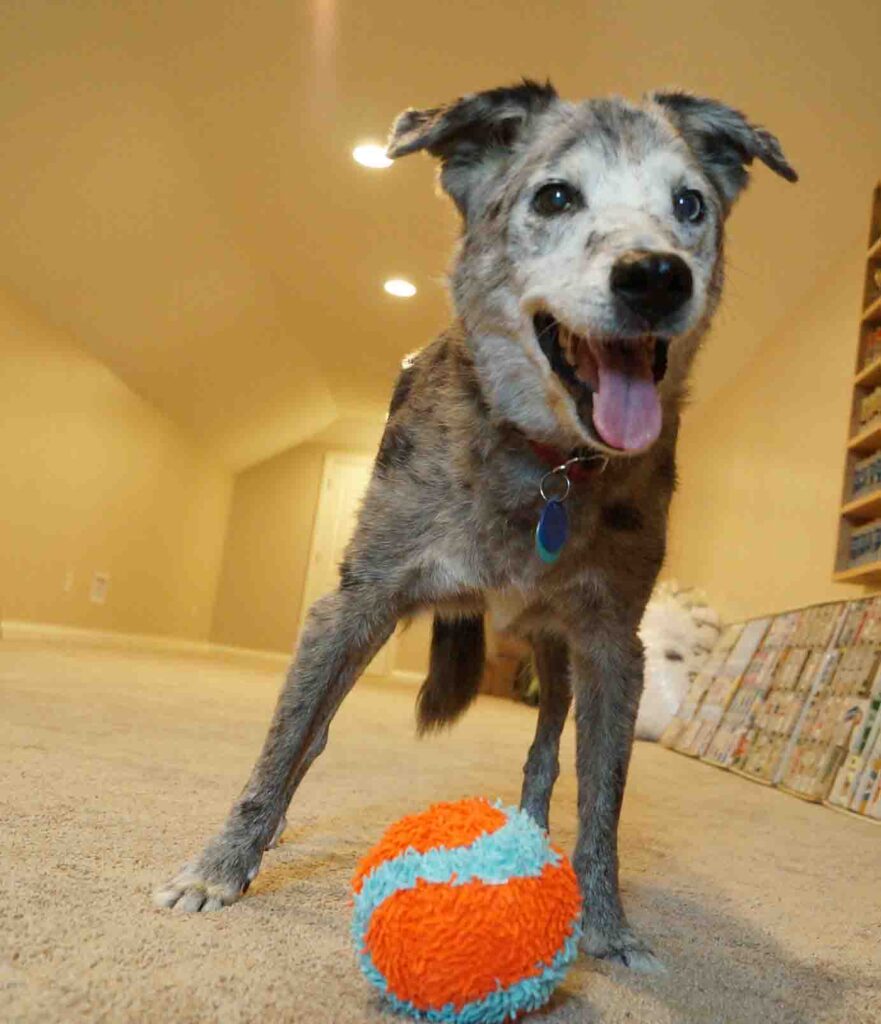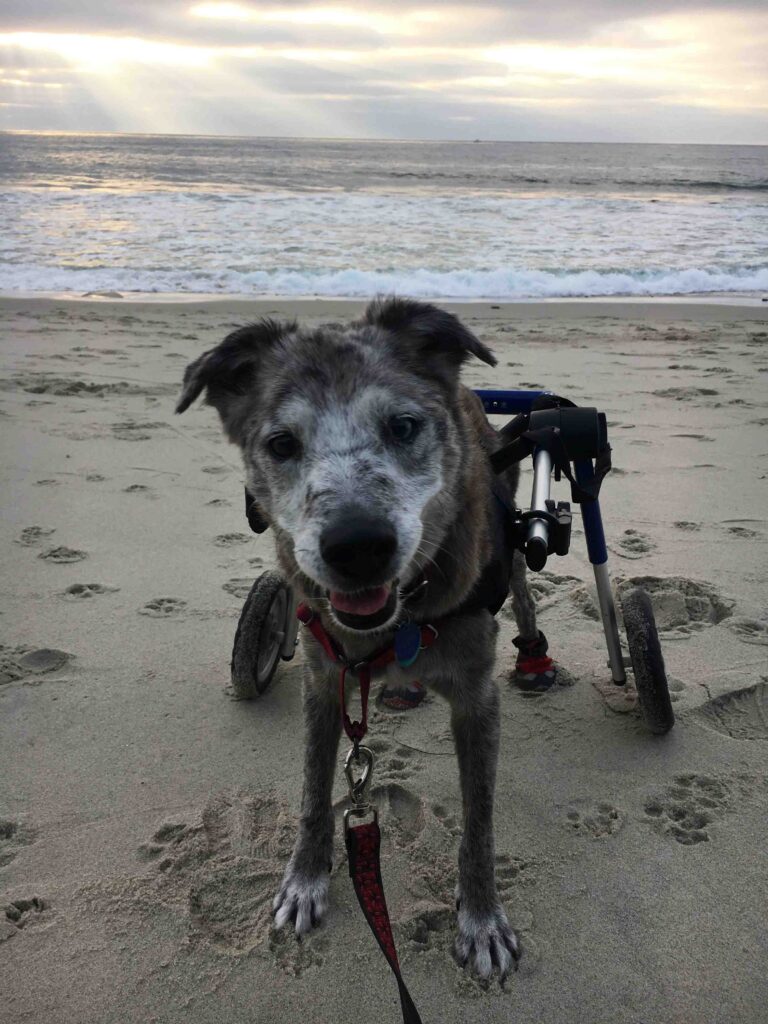I am a firm believer that a dog with mobility issues needs to keep moving. That doesn’t mean pushing your dog beyond what she can. It means adapting and coming up with ways to exercise even when taking walks isn’t possible. Our experience with Karlie was if she took a break from walking and other exercise, her mobility issues worsened. Although there were times when she struggled to walk, and even needed to have her back legs supported to pee and poop, I figured out ways for her to exercise so she didn’t continue to loose strength in her back legs. Below are some of the things that we did. This is not an exhaustive list, just some ideas to get you thinking how to keep your dog moving. Some of these are also good for exercising your dog inside when it’s too hot to be outside.
Cavaletti
Is an Italian term meaning “little horse”. It consists of exercises used to condition horses, but can also be used for dogs. Cavaletti strengthens muscles and works the brain by having the dog use muscles in different ways than normal walking and playing. It involves having your dog walk over cones and sticks. This link details a variety of configurations and exercises to try with your dog – AKC Cavaletti At Home For Your Dog
Agility
We’ve all seen dogs performing agility and it’s something that can be done at home. You can make jumps and weave polls from PVC and pool noodles or purchase them online. For dogs with mobility issues you can make an agility course using pillows, cones, and dowels. I made a course for Karlie that required her to walk over dowels supported a few inches off the ground between two plastic cones and over pillows and her bed. Walking on uneven surfaces (the pillows and dog bed) and raising her feet to walk over the dowels made her aware of her back legs and made her use her muscles in ways she didn’t on a typical walk. This link gives some agility training tips – AKC Agility Training Tips. This link shows how to create a cardboard agility course – Cardboard Agility Course. Agility may not be appropriate for all dogs depending on their mobility and other issues.
Do What Your Dog Loves
Karlie LOVED to play ball; she would chase any ball at any time. When she started to have mobility issues we still played ball every day. We didn’t play for as long as when she was younger and most of the time we played inside unless it was cool outside. I also made sure the ball stayed on the carpet where she had better traction and put “sneakers” on her back feet. If your dog has a favorite toy or activity, try to figure out how to still allow your dog to do it. It’s important to try to let your dog do the things she loves. Karlie played ball until her very last day, and I always said the day she couldn’t or wouldn’t play ball was when it was time to say goodbye.

Take a Hike
If your dog can go for walks consider taking her on hikes requiring walking on uneven surfaces and going up and down inclines. Make sure the trail is appropriate for your dog’s abilities and don’t plan for a long hike the first few times. Just like with walks, build up to longer distances. Remember to let your dog take breaks to sniff and rest and bring water for both you and your dog. Karlie and I started hiking before she was diagnosed with GOLPP and after the diagnosis we refused to let that stop us from doing what we loved. I adjusted the length and difficulty of the hikes depending on her mobility and the weather. We went at least weekly in the canyons, woods, and beaches. This was our happy place and some of my fondest memories with my sweet girl. Check out some of our hikes using this link – Hiking.

Food Enrichment
Another way to keep your dog moving and using her brain is to provide food enrichment. There are a variety of food puzzles that you can purchase, but you can also make your own. This link shows how to use boxes to make an enrichment puzzle – Foraging Boxes Food Enrichment. Here’s another link with DIY ideas for enrichment – DIY Enrichment Toys/Games.
Wheelchair Therapy
When Karlie’s back legs worsened to the point she needed me to support them to pee and poop and could not go on walks, we purchased a rear-wheel wheelchair. At first she didn’t want to use it for walks so we did laps in our basement. We started with a few laps with me encouraging her with treats and worked up to half a mile. Then we took it outside and into our yard. Eventually she was able to use it on walks and hikes and go up to two miles. This link gives additional information on using a wheel chair – Got Wheels?
